Armenian holiday foods are more than food; they carry stories from centuries of history, faith, and community. These dishes, rich with tradition and made with care, show the heart of Armenian culture. They welcome guests, bring families together, and reflect a strong link to heritage. From hearty main dishes to delicate sweets, each plate has meaning, often tied to the crops of the Armenian Highlands and the strength of the people.
Armenia’s mountains and long history shaped a kitchen that balances simple, nourishing meals with festive, indulgent plates. These special dishes show how people learned to live well with few resources through cold winters, and how they celebrate generously when food is plentiful or after fasting periods end.
How Do Armenian Holiday Foods Reflect Tradition and Culture?
Holiday foods in Armenia carry old customs, faith, and family life. Many recipes come from grandparents and great-grandparents, taught by cooking together and telling stories. The coin hidden in Daree Hats (Year Bread) on New Year’s Eve is a good example. It reflects an old wish for luck and growth, linking today’s families with the hopes of their ancestors.
Wheat, dried fruits, and nuts in dishes like Anoush Abour and Ghapama point to farming roots and the value of a good harvest. During fasts, many people eat vegetarian foods like Lenten dolma, a sign of strong Christian faith in a country that made Christianity its state religion in 303 AD. The way people serve food-big spreads with warm hospitality-also shows how Armenians honor guests and family ties.
Which Holidays Feature Distinct Dishes in Armenia?
Specific holidays bring specific foods. The holiday period runs from January 1 to January 6, ending with Armenian Christmas. New Year’s Eve often features Daree Hats and Anoush Abour, a sweet pudding wishing for a sweet year.
Easter marks the end of Lent. Choreg, a sweet, rich bread, is braided to represent the Holy Trinity. Harissa, a wheat and meat porridge, also appears as a sign of plenty. Everyday favorites like Dolma and Khorovats become highlights at holiday tables. Ghapama, a stuffed pumpkin, is common around Christmas and New Year, especially for families beginning a new chapter, like newly married couples.
| Holiday | Date | Common Dishes |
|---|---|---|
| New Year’s Eve/Day | Dec 31-Jan 1 | Daree Hats (Year Bread), Anoush Abour, Ghapama |
| Armenian Christmas | Jan 6 | Ghapama, celebratory meats, festive sweets |
| Easter | Spring (date varies) | Choreg, Harissa, grilled meats, sweet pastries |

What Ingredients Define Armenian Holiday Foods?
Armenian holiday cooking uses ingredients that tell the story of the land and its ties to nearby food cultures. Grains bring earthiness, dried fruits add gentle sweetness, and old preservation methods still shape flavors and textures. Many items carry meaning tied to faith, luck, and family.
Lamb is common at feasts after fasts end. At the same time, church rules led cooks to develop rich vegetarian food for many days of the year. Beans, lentils, nuts, yogurt, and cheese are key, showing that comfort and flavor do not have to center on meat.
Key Spices and Flavorings Used in Festive Dishes
Holiday dishes use spices that add warmth and distinct aroma.
- Mahlab (from cherry pits): adds a soft, almond-like note to sweet breads like Choreg
- Nigella seeds: used in Choreg for a gentle, nutty scent
- Allspice: common in meat dishes for warm flavor
- Red pepper paste (mild or hot): gives fruity depth and gentle heat
- Garlic and onions: base of many savory dishes
- Fresh herbs (parsley, dill, scallions): brighten salads and stuffed vegetables
- Sumac: tangy sprinkle at the end
- Aleppo pepper: mild heat with a fruity taste
Local Produce and Seasonal Ingredients
The Armenian Highlands offer wheat in many forms-gorgod (skinless whole wheat) and bulgur-central to Anoush Abour, Harissa, and Eetch. These ingredients stand for life and prosperity.
- Dried fruits (apricots, raisins, dates, figs): add sweetness and chew to Ghapama and sweets
- Pomegranates: a national symbol used as garnish and ingredient
- Nuts (walnuts, pistachios, almonds, hazelnuts): enrich fillings, desserts, and toppings
- Seasonal vegetables (pumpkin, peppers, tomatoes, eggplants, grape leaves): core to dishes like Ghapama and Dolma
Influences from Neighboring Cuisines
Armenian food grew at a crossroads, picking up ideas from Southwest Asian, Middle Eastern, and Mediterranean kitchens while keeping its own voice. Dishes like fassoulia (tomato-braised green beans), pilaf, and dolma appear across the region with local twists.
Hummus and baklava now show up on many New Year tables, shaped in part by diaspora return and regional exchange in the 20th century. Some Russian-style dishes and Georgian favorites also joined holiday menus. The result is a living tradition that honors the past and welcomes good ideas from neighbors.
How Are Armenian Holiday Foods Prepared and Shared?
Cooking and sharing holiday food carry deep meaning. Families and friends often cook together, passing down methods and stories while they work. During festive times, the kitchen turns into a lively place with many hands helping.
The time and care that go into these meals show how much the celebrations matter. It is a true act of hospitality. Tables fill with many plates, inviting everyone to eat and enjoy together.
Rituals and Meaning in Holiday Cooking
Many dishes come with small rituals that add meaning. Daree Hats (Year Bread) for New Year’s Eve has a coin hidden inside. Finding it promises good luck and growth in the year ahead. This simple act turns a loaf into a sign of hope.
Lenten dolma, often made with seven grains, stands for plenty and well-being during fasts. Families also share anoush abour (sweet soup/pudding) with relatives as a gift during holidays, wishing them sweetness in life. These habits keep old stories alive in modern homes.
Family Roles and Communal Preparation
Holiday cooking often brings many generations together. Grandmothers, parents, and children each do their part. Elders guide. Younger cooks learn by doing. Making manti-tiny meat dumplings-used to be a long team effort before Christmas, with women preparing and freezing trays of them ahead of time.
People joke that “too many women in the kitchen will burn the food,” but the shared work, laughter, and talk are part of what makes the food special. The time together matters as much as the meal.

Regional Variations in Holiday Cuisine
Armenian food has one identity but many local styles. Moves across lands, different climates, and local crops shaped how families cook for holidays. Just like a language has dialects, each area gives its own voice to the feast.
These changes go beyond small tweaks. Ingredients, methods, and the dishes people prize can differ from place to place. Knowing these variations adds depth to the story of Armenian cooking.
Differences Between Eastern and Western Armenian Holiday Foods
The split between Eastern and Western Armenian kitchens comes from history and movement of people. In Eastern Armenia (the modern Republic of Armenia), Russian and Soviet-era cooking affected holiday tables. Many families serve pork leg roast, turkey, meat pancakes, and salads like olivier (stolichny), vinegret, and beet salad for New Year.
Western Armenian food, tied to historical Armenian lands (now largely in Eastern Turkey) and communities in the Middle East and the wider diaspora, leans more on pilaf. Rice pilaf shows up with most meals, which was less common in Eastern Armenia until recent years. Dishes like lahmajun, boreks, and losh kebabs are central at parties and holidays and lean more toward Middle Eastern flavors. Shared roots remain, but ingredients and tastes diverged with time and place.
Adaptations by Armenian Communities Worldwide
As Armenians settled around the globe, they adjusted recipes to fit local markets while keeping core flavors and meaning. This flexibility shows the creativity of home cooks who remake the tastes of home wherever they live.
In the diaspora, old recipes often become even more precious. Families may swap ingredients or add local dishes. For example, an Armenian household in the United States might serve turkey alongside dolma at Christmas. One family might add stuffed jalapeños to the table, adopting a new favorite. Even with changes, cooking together and sharing food keep the spirit the same.
Popular Armenian Holiday Dishes
During holidays, Armenian kitchens fill with the smells of dishes loved for generations. These plates carry stories and memories. Sweet breads mark religious days; rich stews gather people around the table. They are the stars of the feast.
Expect bold flavors, comforting textures, and careful preparation. Whether for a major holiday or a big family event, these foods bring warmth, joy, and a taste of roots.
Choreg: Armenian Easter Bread
Choreg is a classic Armenian sweet bread that appears at Easter and beyond. It is similar to brioche but a bit sweeter. What makes it special is its aroma from mahlab and nigella seeds, which give a nutty, floral note.
Bakers shape choreg into rolls, knots, or long braids. The three-strand braid stands for the Holy Trinity. Making choreg takes time and fills the house with a lovely smell, a sure sign that Easter is near. While neighbors have similar breads, Armenian choreg stands out for its spices and symbols.
Ghapama: Stuffed Pumpkin for Festive Occasions
Ghapama is a baked pumpkin filled with “jeweled” rice pilaf. The tender pumpkin pairs with a savory-sweet mix of rice, onions, nuts, and dried fruits. It looks beautiful and tastes rich and comforting.
There is even a folk song, “Hey Jan Ghapama,” praising how it feeds many. It often appears around Christmas and New Year, when pumpkins are in season. After baking, the pumpkin is cut into wedges and opened like a flower, with glossy rice piled in the center.

Khorovats: Armenian Barbecue at Celebrations
Khorovats means grilled meats, often cooked outdoors with family gathered around. It is as much a social event as a meal.
- Shish kebabs: chunks of beef or lamb marinated with onions, tomato paste, red wine, salt, and pepper, then grilled over charcoal for a smoky finish
- Losh kebabs (lula/lule): seasoned ground lamb or beef shaped into patties (or onto skewers), sometimes with allspice and mild red pepper paste, cooked until juicy
Khorovats shows the love for grilled meat and shared feasting.
Dolma: Stuffed Grape Leaves and Vegetables
Dolma and its cousin sarma are stuffed dishes. Dolma usually fills vegetables-peppers, zucchini, eggplant, or potatoes-with rice and meat (or a vegetarian mix). Sarma wraps the filling in leaves, most often grape or cabbage leaves. Both cook slowly in a tomato-based broth until tender and flavorful.
During fasts like the lead-up to Armenian Christmas, families make Lenten dolma (pasuts dolma). It uses beans, chickpeas, lentils, raisins, and dried fruits, sometimes seven grains for good fortune, often wrapped in cabbage leaves.
Harissa: A Dish of Remembrance and Community
Harissa (herisseh or keshkeg) is a beloved national dish and a favorite in cold weather. It is a slow-cooked porridge of wheat berries (korkot) and meat, usually chicken or lamb. The mix cooks gently for hours until it thickens and the grains and meat come together.
Harissa often appears at Easter to mark the end of Lent and at other family milestones, like the birth of a first child. A spoon of browned butter with Aleppo pepper on top adds deep, savory flavor. Many people see it as food that brings people together and honors the past.
Boreks: Savory Spinach and Cheese Pastries
Boreks are flaky phyllo pastries common on mezze tables and at parties. Armenian versions often use a mix of cheeses-mild melty cheese like Muenster or Monterey Jack with tangy feta and creamy cottage or cream cheese.
Another favorite filling adds cooked, well-drained spinach to the cheese. Parsley, dill, and scallions add more flavor, and eggs help bind the filling. Triangle hand pies are popular, but larger trays baked and cut to size are also common. Golden crust outside, savory filling inside-boreks are hard to resist.
Gata: Armenian Holiday Cake
Gata is a lightly sweet, buttery pastry that can act like a cake or a bread. It appears at holidays, with coffee or tea, or as part of a mezze spread. Styles vary by region. Some versions roll thin, enriched dough with butter and cut spirals that bake into many layers.
Others are more cake-like, using yeast or baking soda with yogurt or other acidic dairy. A simple version presses dough into a round and fills it with butter, flour, sugar, and vanilla, sometimes with khoritz (a chopped nut mix like streusel). People often score patterns on top before baking. Gata is common at the Feast of the Presentation of Jesus at the Temple and carries old stories in every slice.
Pakhlava: Rich Layered Dessert
Pakhlava is the Armenian version of layered phyllo pastry with nuts and syrup. It uses many thin sheets brushed with butter and a filling of spiced, finely chopped walnuts.
After baking, a warm syrup of honey and sugar-sometimes with lemon or rosewater-soaks the layers. The result is crisp yet tender, with intense sweetness. It often steals the show on the dessert table.
Traditional Appetizers and Side Dishes
A holiday feast also needs small plates that set the tone and balance the richer mains. These sides bring color, crunch, and bright flavors to the table. They show how Armenian cooks use fresh produce and old preservation methods to make food that feeds both body and soul.
These plates invite sharing and conversation and help round out the meal so it feels complete.
Lavash: Armenian Flatbread for Celebrations
Lavash is central to Armenian food and culture and is listed by UNESCO as intangible cultural heritage. It uses simple ingredients-flour, water, salt (sometimes yeast). The dough rolls into very thin sheets and cooks quickly on the walls of a tonir (wood-fired oven).
Fresh lavash is prized at celebrations. It scoops dips, wraps meats and cheeses, and makes quick sandwiches. Its soft texture and clean wheat flavor pair well with everything. Some lavash is dried for storage, but fresh is the star at holiday tables.
Rice Pilaf and Its Variations
Rice pilaf is basic to many Western Armenian homes and often sits alongside most meals. It usually starts by toasting long-grain rice and a little vermicelli in butter, then simmering in chicken stock until fluffy.
Festive versions may add dried fruits, nuts, or spices, turning it into a “jeweled” pilaf like the filling of Ghapama. Pilaf is a gentle base for stews, grilled meats, and vegetables. Its familiarity even shaped American pantry items like Rice-a-Roni.
Tourshi: Pickled Vegetables
Tourshi means pickles and is a must on mezze spreads and next to rich dishes. The sharp, crunchy vegetables brighten the meal and cut through heavier foods. Common vegetables include carrots, cauliflower, cabbage, and turnips.
Many families use a vinegar brine with spices like mustard seed, coriander, black peppercorns, and allspice. Others use natural fermentation, like sauerkraut. Pickling takes some weeks and helps carry summer produce into winter. A colorful plate of tourshi brings both beauty and bite to the table.
Eetch (Itch): Bulgur Wheat Salad
Eetch (Itch) is a bulgur salad that often shows up with appetizers. It is more moist and cohesive than tabbouleh. Fine bulgur mixes with a tomato base and lots of chopped herbs.
Eetch is one of many meatless dishes created for church fasts, so it is common during Lent. Eat it with a fork, scoop it with lettuce, or wrap it in lavash. It offers a bright, savory break from heavier plates.
Festive Armenian Sweets and Desserts
Holiday meals end with sweets that bring joy and luck. These desserts are a highlight and often the most anticipated dishes at the table.
From syrup-soaked pastries to simple cookies and fruit-and-nut treats, Armenian sweets layer textures and flavors with care. They celebrate abundance and close the meal on a happy note.
Which Sweets Are Served During Armenian Holidays?
Many sweets appear during holidays. Alongside Gata and Pakhlava, families serve dried fruit and nuts on a copper tray called “charaz”-raisins, hazelnuts, dates, figs, walnuts, and almonds. Fresh apples, quinces, pears, and pomegranates sit nearby for a crisp counterpoint.
Anoush Abour, a sweet wheat and walnut pudding, is tied to New Year and wishes for a sweet life. Kourabia, almond shortbread cookies, are common at holidays and weddings. Burma-phyllo logs filled with walnuts and soaked in syrup-adds another rich option. These treats also make welcome gifts and show warm hospitality.
Kourabia: Holiday Almond Cookies
Kourabia (Armenian shortbread “S” cookies) are tender butter cookies made with flour, butter, and powdered sugar. They melt in the mouth and carry a simple, rich taste. The “S” shape is traditional, though other shapes appear too.
Kourabia often mark special days and family events. Home bakers like them because they are straightforward to make and always popular. A dusting of powdered sugar adds a snowy finish.
Sujukh: Walnut and Grape Dessert
In Armenian sweets, Sujukh refers to a grape-and-walnut confection (also called Churchkhela in nearby regions). Walnuts are strung on thread and dipped again and again into thickened grape juice (pekmez or reduced grape must), drying between dips. The result looks like a candle or sausage, with a chewy outside and a crunchy, nutty center.
This careful process often happens at harvest, and the treats are enjoyed through winter and holidays. The deep grape flavor and walnut crunch offer a taste of the land in a unique form.
Tips for Creating an Armenian Holiday Feast
Planning an Armenian holiday feast is a rewarding project. It gives you great food and a closer link to culture and family. While the menu may feel like a lot, a few clear steps can turn your kitchen into a lively, welcoming space. Focus on the flow of the meal, how flavors play together, and the spirit of generosity at the table.
Whether you cook often or are new to these dishes, the ideas below will help you handle the process and make a warm, flavorful, and inviting spread. The goal is an experience where each dish adds to the celebration.
Recommended Menus for Major Holidays
- New Year’s Eve and Armenian Christmas (Jan 6):
- Main: Khorovats (grilled meats) or pork leg roast
- Sides: Dolma (or Lenten Dolma if fasting), Rice Pilaf, Eetch, cucumber-tomato salad
- Sweets: Anoush Abour, Daree Hats with a hidden coin, dried fruits and nuts (charaz)
- Easter:
- Essentials: Choreg, Harissa
- Also: Grilled meats, fresh salads
- Desserts: Pakhlava, Kourabia, Gata
Substituting Ingredients Without Losing Authenticity
Many cooks want to stay close to tradition, but swaps are sometimes needed. Think about what each ingredient does and use a near match. If you cannot find mahlab, try a tiny pinch of ground cardamom with a drop of almond extract for a similar warm note. If gorgod (skinless whole wheat) for Anoush Abour is hard to find, pearled barley can give a close texture, though the taste will differ.
Use jarred grape leaves when fresh ones are out of season. If lamb is not available or preferred, use good beef or chicken for kebabs or stews, and adjust cooking time and seasoning. Armenian cooking values smart use of what you have, so adapt while keeping the core flavors and methods.
Hosting Traditions: Serving and Presentation
Armenian hosts like to offer plenty and make guests feel welcome. Presentation matters: a table full of colorful salads, shiny pastries, and hearty main dishes draws people in. Fresh herbs, pomegranate seeds, and nuts make simple, bright garnishes.
Serving is family-style, with large platters that invite sharing. Hosts encourage guests to try everything and eat well. A common saying-“the way you welcome the year is how you’ll live it”-captures the love of abundance at New Year. Turning down a dish made with care can be seen as impolite, so guests are invited to taste widely and enjoy.
Why Do Armenian Holiday Foods Matter Today?
Even in a fast, global world, Armenian holiday foods still carry deep meaning. These recipes are living traditions that help people hold on to identity, build community, and link generations. They connect the past to the present and point to the future, showing how food can carry memory and belonging.
Cooking and sharing these meals keep stories alive. Every bite holds a bit of history, the echo of ancestors, and a celebration of a people who hold tight to their culture.
Preserving Heritage Through Food
Holiday foods help protect an old and rich heritage. Recipes passed down by voice and handwritten notes hold centuries of faith, culture, and daily life. When a family bakes Choreg for Easter or makes Ghapama for New Year, they are joining an old ritual. Ingredients, cooking methods, and even shapes-like the braid in Choreg-act as real links to the past.
In a world where cultures can blend and fade, these foods keep Armenian flavors, smells, and stories strong. For the diaspora, they bring a taste of home that crosses borders and time. They play a key role in keeping Armenian identity alive.
Bringing Communities Together Across Generations
Holiday foods also bring people together and bridge ages. Big cooking days turn the kitchen into a place to learn and bond. Grandmothers and mothers pass on recipes, jokes, and wisdom to children and grandchildren. This hands-on teaching builds skills and memories at the same time.
Sharing a large holiday table unites relatives, friends, and newcomers. These meals create a space where stories are told, traditions continue, and the Armenian spirit is shared. From the moment someone finds the coin in Daree Hats to the last spoon of Harissa, these foods create connections that last well beyond the meal.


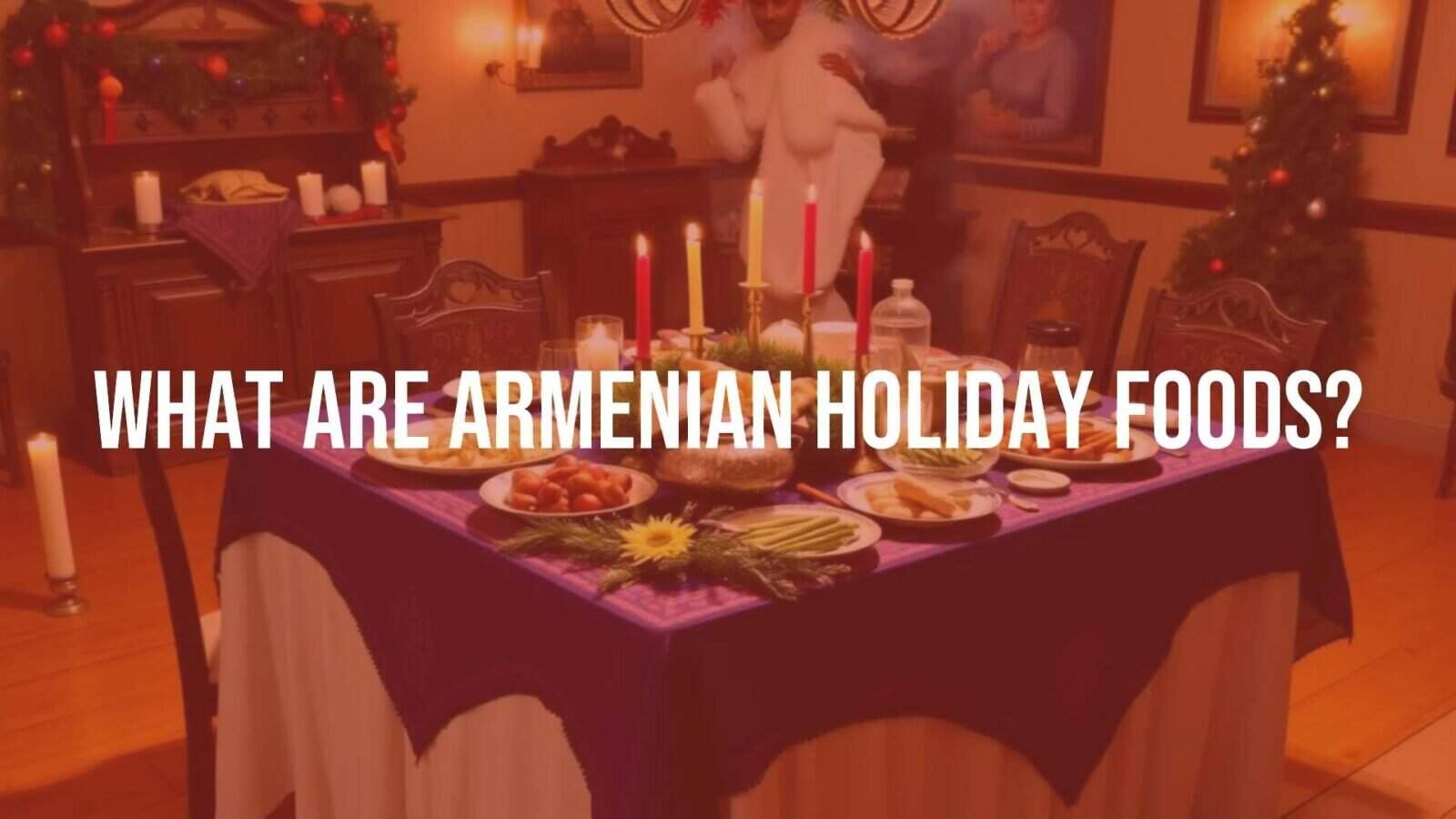
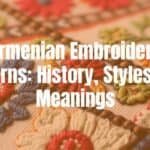


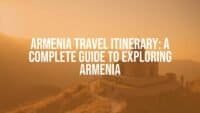
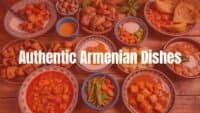

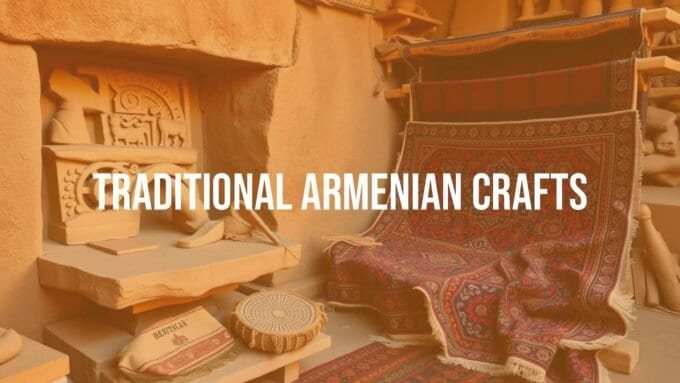


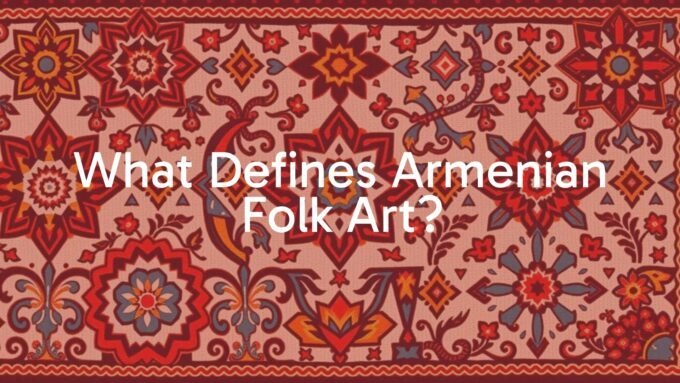


Leave a comment